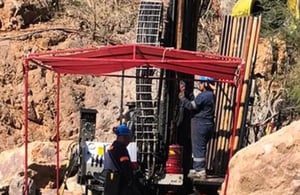Oakley Capital Investments plc (LON:OCI) is the topic of conversation when Hardman and Co’s Analyst Mark Thomas caught up with DirectorsTalk for an exclusive interview.
Q1: Oakley Capital Investments, you called your note ‘NAV: conservative, robust with growth upside. Mark, what can you tell us about it?
A1: In this note, what we did was we examined three aspects of the company’s net asset value.
Firstly, why investors can have confidence that it is conservatively calculated, there’s no incentive to inflate inflations and a really tech enabled business mix.
Secondly, we looked at the net asset value being robust through the COVID-19 crisis, a feature we expect to continue driven by digitally delivering and companies, largely defensive sectors, and the company’s large cash balances.
The third thing we looked at was the upside from incorporating the markets, what I call the vaccine recovery, into the net asset value. That’s compounded by underlying structural growth and a unique sourcing model in what should be very attractive markets for new business and the discount to the net asset value which has nearly 30% is an additional attraction.
Q2: So, if we break these things down, can you tell us more about why you think the NAV is conservative?
A2: Well, to me, the most important thing is that the proof of the pudding is always in the eating so on exit, the company has achieved higher valuations than the book value, in more recent years, so since 2017, it’s been 42%. Now, that’s well above what you might consider even a normal bid premium in the public markets.
The second thing is that the management fee for investments in the company’s funds, the underlying investments, it’s based off commitments and invested cost, not the accounting carrying value, not the net asset value. Whilst performance fees are accrued on route, critically the cash is only paid out when sale proceeds, not on any accounting revaluation. So, neither the management fees nor the performance fees, when paid, are actually dependent on the reported net asset value so there’s no benefit in then inflating the number.
The third thing is a consideration of the reasonableness of the overall portfolio and to look at the range of multiples which are being applied and how that’s changed over time. So, today the average EV/EBITDA is 11.8 times, the small drop actually reflects two mix changes with the growth in the number of highly rated technology and tech-enabled companies more than offset by adding low rated new businesses which are early in private equity lifecycle and yet to see the value add.
So, why is the NAV conservative? It’s a materially higher than carry value, there’s no incentive to inflate it and third, when you look at the ratings multiple, it’s very reasonable bearing in mind the mix.
Q3: Why then do you say it’s robust?
A3: In the first half of this year, the net asset value total return was plus 4% despite the COVID crisis and really importantly, 14 of 17 companies at June, were expected by the year-end to be at or near budget. Now, this confirms the historical trend we’ve seen across the whole private equity industry. It really reflects the fundamental model, the portfolio is structured so that three quarters of investments benefits from digital and subscription models or both, it’s primarily in defensive sectors.
Like other private equity businesses, they have a long-term investment horizon so it has to position itself for downturns. Through the crisis, additionally, the company’s expertise and its funding has really assisted companies, both operationally and in managing their balance sheets.
Q4: Finally, the growth?
A4: OCI funds companies delivered 17.5% annual EBITDA growth to the end of June, it was 30% the end of December, pre-crisis, which continues the trend of growth well ahead of most equity indices.
OCI ‘s portfolio are not about milking cashflows from established business but by social democratic trends, not cyclical opportunities. The company has deep entrepreneurial relationships which give it to you unique origination advantage and with over £250 million in cash, it has the resource to fully exploit the opportunities we expect to be thrown up in the current economic turmoil.
Additionally, we expect the rate of investee companies to increase as value is added through the business through their life of OCI ownership and finally, the net asset value is still based off June valuations and so it is yet to incorporate the recent market, dare I call them vaccine-related rallies.
Q5: So, finally, how would you summarise the investment, positive and negative, for Oakley Capital Investments?
A5: OCI gives investors liquid access to the attractive private equity market enhanced by their incremental origination and management scales.
The funds are focused in mid-market tech-enabled Western European companies that operate in the consumer, education, and technology sectors. Accounting and governance appear robust and conservative.
There are risks but we see them primarily as sentiment driven around the costs, cyclicality as well as the liquidity evaluation of underlying private assets.
Previously, large shareholder overhangs have now been sold out completely and you’re buying a business with a consistent record of outperformance at a material discount to net asset value.







































